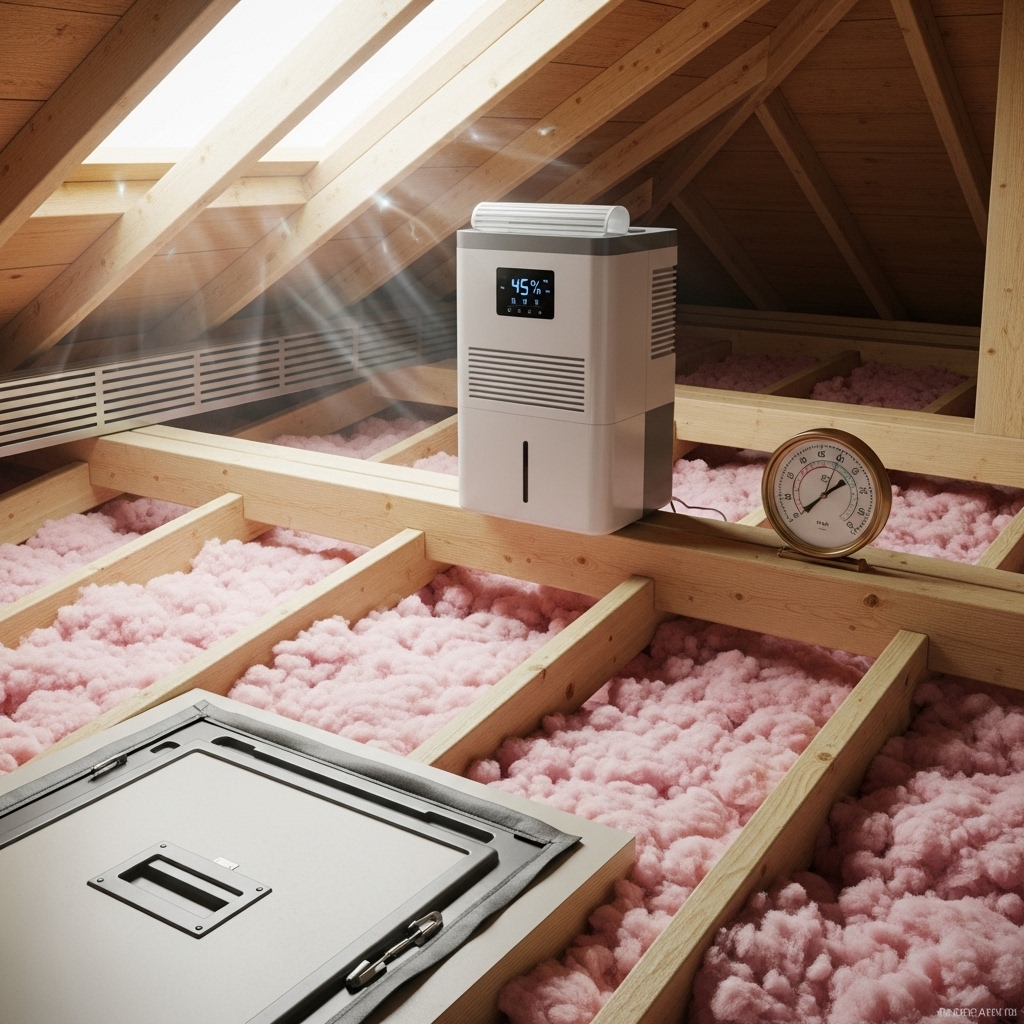Protect Your Investment After Insulation Removal
Once you have removed old insulation from your Malibu home, the work is only half done. Keeping the attic clean, dry, and well-sealed protects your investment and ensures the space is ready for long-term performance. Malibu’s coastal climate—salt air, morning marine layers, and periodic wildfire ash—means a proactive maintenance plan is essential. Use the tips in this guide to maintain a healthier attic environment, safeguard indoor air quality, and set the stage for a durable, high-performing insulation installation when you are ready to rebuild your thermal barrier.
Moisture Management and Ventilation
- Monitor humidity: Use a simple hygrometer to spot elevated attic humidity after foggy mornings. Aim to keep levels reasonable by ensuring clear airflow.
- Keep vents clear: Inspect soffit and ridge or gable vents quarterly. Remove debris, dust, or nests that restrict airflow.
- Duct exhausts correctly: Confirm bath and kitchen fans vent outdoors with insulated ducting. Venting into the attic adds unwanted moisture.
- Check roof penetrations: After storms, inspect around chimneys, skylights, and roof vents for signs of leaks.
Air Sealing Upkeep
Air sealing is the unsung hero of comfort and efficiency. After removal, you likely sealed top plates and penetrations; keep them in good condition:
- Reinspect seals: Look for cracks or gaps that may open with seasonal movement. Reapply sealant or foam where needed.
- Chimney/fire safety: Ensure fire-rated barriers remain intact and clearances are maintained.
- Access hatch: Weatherstrip and insulate the hatch or door to prevent heat loss and moisture migration.
Cleanliness and Pest Prevention
- Routine HEPA vacuuming: A light HEPA pass every few months prevents dust buildup, especially after windy periods.
- Odor watch: If you detect odors, inspect for new rodent activity or dampness and address the source promptly.
- Screening and sealing: Maintain screens at gable and soffit vents; seal gaps around utility penetrations to deter pests.
Material-Specific Notes if Some Insulation Remains
- Fiberglass batts: Keep them dry and fluffed; replace batts that have been compacted or water stained.
- Blown-in cellulose: Check for settling or clumping; remedy moisture sources first before topping up later.
- Spray foam: Inspect for UV exposure at any daylight openings; seal cracks and address water intrusion immediately.
Preparing for Re-Insulation
When the attic remains clean, dry, and sealed, re-insulating is faster and more successful. Choose materials that maintain loft under Malibu’s humid mornings and meet local codes. If you intend to add sound control or radiant barriers, integrate them with ventilation best practices. Timely scheduling ensures your upcoming insulation installation goes smoothly and delivers long-term efficiency.
Routine Inspection Calendar
- Monthly quick check: Scan for new debris, odors, or dampness after foggy or windy weeks.
- Quarterly ventilation review: Inspect soffit and ridge/gable vents and confirm baffles remain secure.
- Biannual deep inspection: Before summer heat and before winter rains, examine seals, ducts, and any stored items.
HVAC and Duct Considerations
- Seal and insulate ducts: Leaky ducts can draw attic dust into living spaces. Use mastic and appropriate insulation sleeves.
- Change filters regularly: After removal, replace filters more frequently for a few cycles as residual dust settles.
- Condensate lines: Verify clear drainage from air handlers; clogs can introduce moisture to the attic.
Odor and Contamination Response
- Rapid response: If you detect urine or musty odors, inspect immediately. The sooner you address sources, the easier cleanup will be.
- Targeted disinfecting: Use appropriate disinfectants with proper dwell times; ventilate during application.
- Source control: Seal entry points and consider traps outside the home perimeter; avoid using repellents that only mask problems.
Documentation and Photos
Keep a running log of maintenance actions with before/after photos. Documentation helps you track changes, spot patterns (like seasonal humidity spikes), and plan improvements with confidence.
Common Mistakes After Removal
- Leaving vents blocked: Even a small blockage can undermine airflow and invite moisture issues.
- Delaying repairs: Minor roof leaks or duct disconnections become big problems if left unattended.
- Skipping PPE for quick checks: Even brief visits can stir dust; wear goggles and a mask when entering the attic.
Frequently Asked Questions
Q: How long can I leave the attic uninsulated after removal? A: It’s best to keep the window short. Maintain cleanliness, control humidity, and schedule the rebuild promptly for comfort and efficiency.
Q: Do I need dehumidifiers in Malibu? A: Most homes rely on good ventilation, but temporary dehumidification can help if humidity spikes occur during marine layer periods.
Q: What if rodents return? A: Identify and seal entry points, maintain exterior sanitation, and consider professional exclusion services for persistent issues.
Q: Can I store items in the attic after removal? A: Limit storage to prevent blocking airflow and accumulating dust; use sealed containers if storage is necessary.
Q: Should I paint or coat attic surfaces? A: Only use appropriate primers or coatings if directed as part of a remediation plan; ensure surfaces are dry and ventilated.
Malibu-Specific Tips for Longevity
- Salt air resilience: Inspect metal fasteners and HVAC housings for early signs of corrosion.
- Wildfire readiness: Upgrade vent screens and reduce combustible debris around the home’s exterior.
- Hillside access planning: Keep a dedicated walkway through the attic to avoid ceiling damage during periodic inspections.
Your Next Step Toward Lasting Comfort
A smart maintenance plan keeps your attic clean, dry, and ready for the future. When the time comes to rebuild your thermal barrier, schedule professional insulation installation to capture the full benefits of your hard work. With consistent care and timely upgrades, your Malibu home will stay comfortable, efficient, and resilient throughout the seasons.

